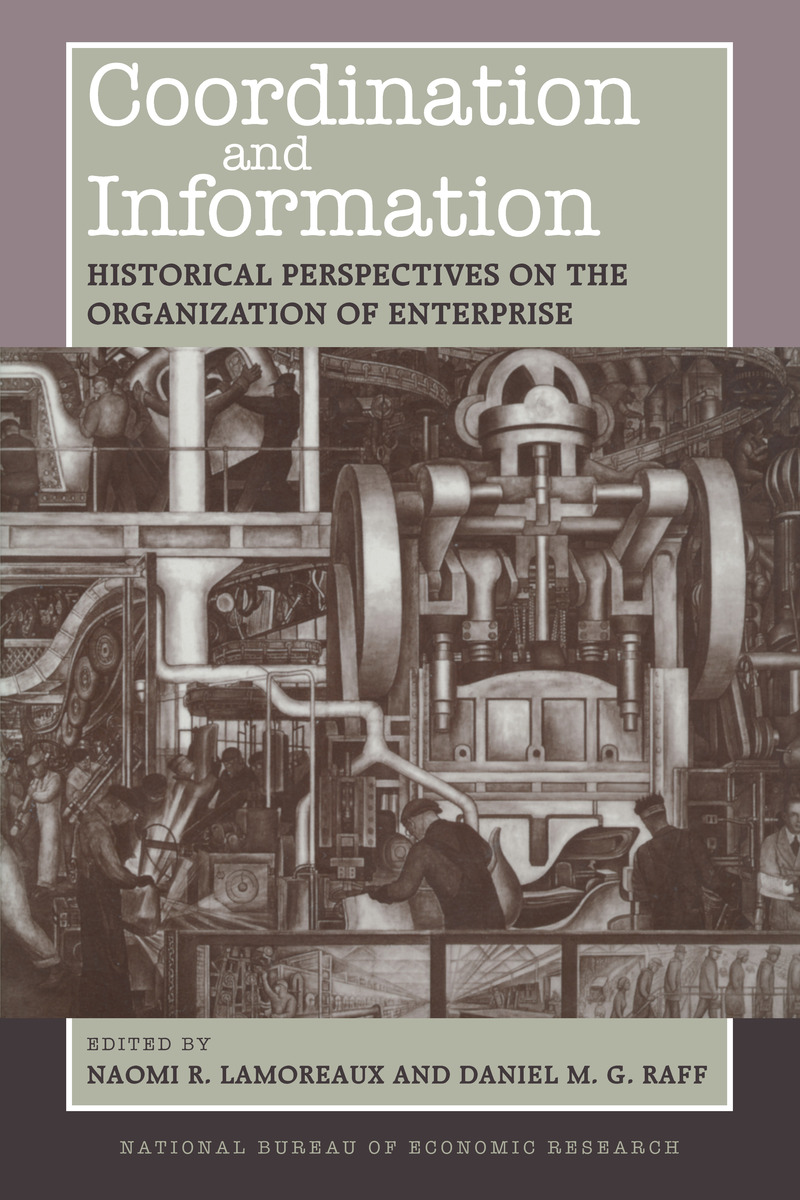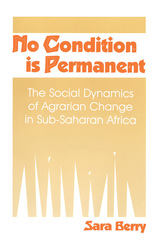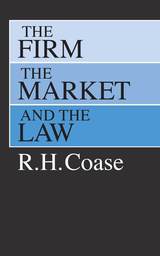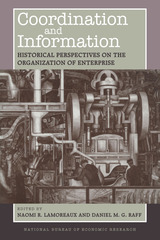Coordination and Information: Historical Perspectives on the Organization of Enterprise
University of Chicago Press, 1995
Cloth: 978-0-226-46820-4 | Paper: 978-0-226-46821-1 | eISBN: 978-0-226-46858-7
Library of Congress Classification HD2326.C66 1995
Dewey Decimal Classification 338.7
Cloth: 978-0-226-46820-4 | Paper: 978-0-226-46821-1 | eISBN: 978-0-226-46858-7
Library of Congress Classification HD2326.C66 1995
Dewey Decimal Classification 338.7
ABOUT THIS BOOK | TOC | REQUEST ACCESSIBLE FILE
ABOUT THIS BOOK
Case studies that examine how firms coordinate economic activity in the face of asymmetric information—information not equally available to all parties—are the focus of this volume.
In an ideal world, the market would be the optimal provider of coordination, but in the real world of incomplete information, some activities are better coordinated in other ways. Divided into three parts, this book addresses coordination within firms, at the borders of firms, and outside firms, providing a picture of the overall incidence and logic of economic coordination. The case studies—drawn from the late nineteenth and early twentieth century, when the modern business enterprise was evolving, address such issues as the relationship between coordination mechanisms and production techniques, the logic of coordination in industrial districts, and the consequences of regulation for coordination.
Continuing the work on information and organization presented in the influential Inside the Business Enterprise, this book provides material for business historians and economists who want to study the development of the dissemination of information and the coordination of economic activity within and between firms.
In an ideal world, the market would be the optimal provider of coordination, but in the real world of incomplete information, some activities are better coordinated in other ways. Divided into three parts, this book addresses coordination within firms, at the borders of firms, and outside firms, providing a picture of the overall incidence and logic of economic coordination. The case studies—drawn from the late nineteenth and early twentieth century, when the modern business enterprise was evolving, address such issues as the relationship between coordination mechanisms and production techniques, the logic of coordination in industrial districts, and the consequences of regulation for coordination.
Continuing the work on information and organization presented in the influential Inside the Business Enterprise, this book provides material for business historians and economists who want to study the development of the dissemination of information and the coordination of economic activity within and between firms.
See other books on: Historical Perspectives | Industrial Management | Information | Infrastructure | Organization
See other titles from University of Chicago Press






















